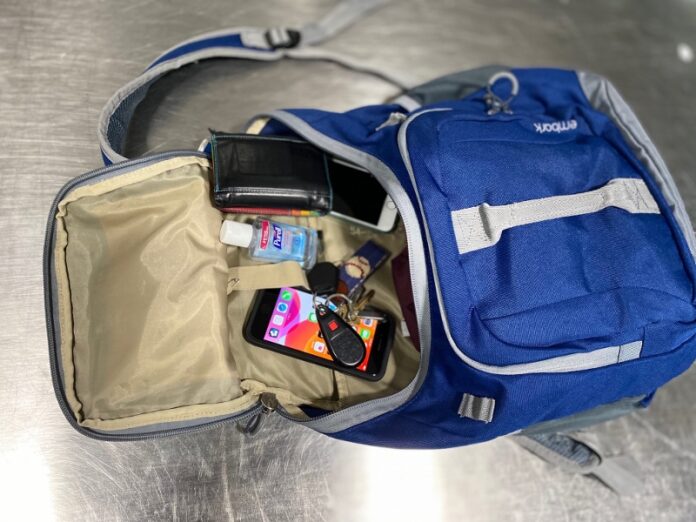The Transportation Security Administration (TSA) is prepared for spring break travel, but what can travelers do to be prepared for airport checkpoint screening during a pandemic? TSA shares these five tips to help you through your checkpoint journey that you can use right now that will help you stay healthy and stay secure when going through the security screening process.
- Reduce touchpoints. TSA is taking steps to reduce touchpoints in checkpoints, and travelers can do the same. When it comes time to walk through the checkpoint screening equipment, travelers need to remove all items from their pockets. When doing so, put those items (keys, wallet, cell phone, lip balm, etc.) directly into your carry-on bag instead of into the checkpoint bin to reduce touchpoints between your belongings and the bins. If the checkpoint has a computed tomography scanner, travelers may leave their electronics inside their carry-on bag, so pay attention to the guidance that the TSA officer is providing about what items can remain in your carry-on bag.
- Pack an extra mask. Individuals who are in airports and on airplanes must wear a mask, so be sure to remember to wear your mask. If you aren’t wearing a mask at the security checkpoint, a TSA officer will remind you to put it on. Refusal to do so means you will not be permitted through the checkpoint. The vast majority of passengers comply with the mask mandate. Smart travelers pack an extra mask or two for their trip in case the elastic strap breaks, their mask becomes soiled or to swap out a fresh mask for one that has been worn for several hours. Consider packing an extra one—just in case it turns out that you need it.
- Bring hand sanitizer and wipes. TSA is allowing travelers to bring up to one 12-ounce container of liquid hand sanitizer per person through the checkpoint. This will add some time to your checkpoint screening experience, but well worth that extra minute or two. Additionally, individuals can bring sanitizing wipes through checkpoints. There’s no limit on the sanitizing wipes, so bring on the wipes and liquid hand sanitizer.
- Pack smart. Travelers need to know what can and cannot go in their carry-on bag. Now more than ever it is important to know what items should not be packed in a carry-on bag because if a carry-on bag triggers an alarm, it will require a TSA officer to open the bag to resolve the alarm. This means that a TSA officer will have to open your baggage and go inside to identify what item may have caused the alarm. Remember, it’s vital to reduce touchpoints during a pandemic, so be sure not to pack any prohibited items. Unsure if an item should be packed in a carry-on bag, checked bag, either or neither? Download the free myTSA app, which has a handy “What can I bring?” feature that allows you to type in the item to find out if it can fly. Or ask us on Twitter or Facebook Messenger at @AskTSA.
- Pack food in a clear plastic bag. If you plan to travel with food, it’s a best practice to pack your food items in a clear plastic bag and place that clear plastic bag into your carry-on bag. When you get to the security checkpoint, remove the clear bag containing your food and place that bag into the bin to reduce the opportunity for cross-contamination between the food and bins. Why remove your food at all? Some food items can trigger an alarm during screening, so instead of a TSA officer needing to open a carry-on bag to check on what triggered the alarm, removing your food reduces the likelihood of the need for a bag search.
As a reminder, beginning October 1, every air traveler 18 years of age and older will need a REAL ID-compliant driver’s license, state-issued enhanced driver’s license, or another acceptable form of ID to fly within the United States. So consider visiting your local department of motor vehicles to update your driver’s license.

